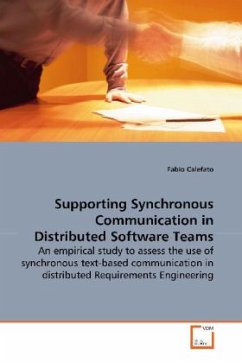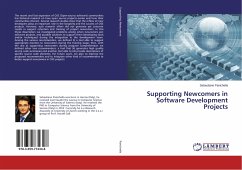Among the software development activities,
requirements engineering is one of the most
communication-intensive and then, its effectiveness
is greatly constrained by the geographical distance
between stakeholders. For this reason, the need to
identify the appropriate task/technology fits to
support teams of geographically dispersed
stakeholders plays a key role for coping with the
lack of physical proximity when developing requirements.
Building on an extensive review of the very many
existing theoris on computer-mediated communication.
This dissertation reports on an empirical study that
assessed the use of synchronous text-based
communication in distributed requirements workshops,
as compared to face-to-face (F2F), and the effects of
computer-mediated communication (CMC), with
respects to the different tasks of distributed
requirements elicitation and negotiation. Results
show that, in terms of satisfaction with performance,
CMC elicitation is a better task/technology fit than
CMC negotiation. Furthermore, the general
preference for F2F over CMC is due to the strong
preference for the F2F negotiation fit over the CMC
counterpart.
requirements engineering is one of the most
communication-intensive and then, its effectiveness
is greatly constrained by the geographical distance
between stakeholders. For this reason, the need to
identify the appropriate task/technology fits to
support teams of geographically dispersed
stakeholders plays a key role for coping with the
lack of physical proximity when developing requirements.
Building on an extensive review of the very many
existing theoris on computer-mediated communication.
This dissertation reports on an empirical study that
assessed the use of synchronous text-based
communication in distributed requirements workshops,
as compared to face-to-face (F2F), and the effects of
computer-mediated communication (CMC), with
respects to the different tasks of distributed
requirements elicitation and negotiation. Results
show that, in terms of satisfaction with performance,
CMC elicitation is a better task/technology fit than
CMC negotiation. Furthermore, the general
preference for F2F over CMC is due to the strong
preference for the F2F negotiation fit over the CMC
counterpart.








